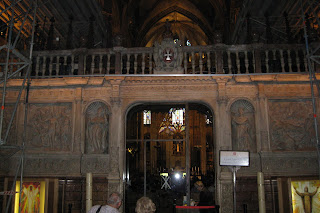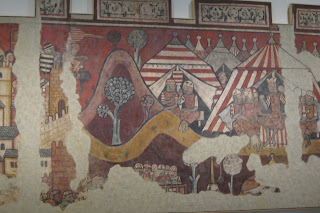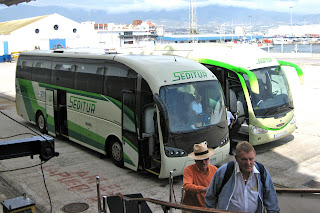
Saturday, May 21 we arrived in Marseille. It is the second largest city in France, after Paris. It was founded in a natural cove in 600 BC by Greek sailors as a trading port.
On our bus tour of Marseille we saw dirty buildings, clean buildings, and a lot of construction. There is a Euro-Mediterranean reconstruction program from the old port area to the business center. A main road has been diverted through a new tunnel. The European Union is contributing some of the funds for this economic development project. This is in preparation for Marseille being the European Capital of Culture for the year 2013.
There were two choices for activities for the day. A visit to Aix-en-Provence with the Paul Cézanne (1839-1906) Studio and a visit to Arles with its Roman ruins. I chose Aix-en-Provence.

In Aix-en-Provence our bus drove on Avenue Paul Cézanne; we passed Pharmacie Cézanne; and we visited Atelier Cézanne, the studio that he designed and where he did most of his indoor painting. But first, we visited the spot where Cézanne painted many pictures with Mont Sainte-Victoire in the background.

Paul Cézanne designed the studio himself. Living accomodations were on the first floor. The studio on the second. Most of the north facing wall was a large window. Beside the window was an approximately 12 foot high by 15 inch wide vertical opening with a door to take large paintings out of the studio. South facing windows had shutters to adjust the amount of light in the room. Inside the studio was a monitor displaying a slide show of Cézanne paintings. Along a shelf were numerous objects recognizable from his paintings: vases, jars, bottles, glasses, skulls, statues, ..., even a bowl of fruit. There were other items: hats, coats, a walking cane, easels, paints, a very tall ladder, and so on. Photographs were not permitted, but the Cézanne studio website has a picture.
According to our guide, Cézanne was not sociable, afraid of modernity, and not appreciated during his lifetime. After he died his son took his paintings to Paris and became an art dealer. The studio remained unused for many years. Then Americans art historian John Rewald and art patron James Lord raised public awareness and money and saved the property from destruction. They found the studio just the way Cézanne had left it 46 years earlier.
We then rode our bus to Aix and toured the old part of the city. We walked along the Cours Mirabeau--a street built for walking, lined with 17th century mansions (now many are shops), and that replaced the city's defensive wall. We walked through a narrow passage into an area that contained a market with arts, crafts, food, antiques and other shops; plenty of local soaps. But the market closes at ... what do I say 1:00 pm or in the vernacular 13h00 ... and quickly becomes a parking lot. We ate lunch on the third floor of La Mado Brasserie Restaurant.

We continued with our walking tour. We passed the Musée d'Histoire Naturelle (Natural History Museum). The area is very well know for its dinosaur egg fossils--known as Eggs-en-Provence.

We passed what our guide called "The first square. It was built so that people could see and admire the mansion (in the background)".

We walked to the town hall square. A wedding party exited (after the picture was taken). Next to the 14th century town hall is a World War I memorial bell tower that contains near the top a clock, below that a moon phase clock, and just below that a clock that changes with the seasons. [Don't forget you can click to enlarge.] At the same location we also visited a cathedral and passed a former Bishop Residence that is now a textile museum.

And as we were trying to rendezvous [aha, a French word] with our bus for the return ride to our ship, a large crowd of students from a local army officer school was singing in this fountain celebrating the end of the school year.


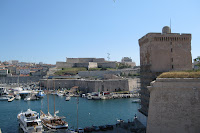

There was a little more photo opportunity time in the Marseille harbor area. To the upper left is a view of the old port with the Neo-Byzantine Notre-Dame de la Garde (Church of the Guarding Lady) on the highest point in Marseille. To the upper right is a close-up of the church. Then the Corinthian II was on her way.
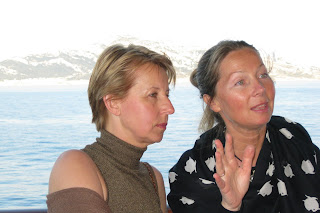
Our two Tour Managers, Nina (left) and Elena, did a fantastic job. They worked really hard and made sure everything flowed smoothly. They did such a good job that they made it look like their jobs were easy. [Nina was one of the Tour Managers on my previous cruise on the same ship.] It turns out that they are from the same area in Russia and had heard about each other, but had not met until this cruise.






